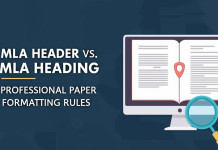When the dictionary first defined branding as “the act of giving a company a particular design or Business symbol to advertise its products and services,” this definition was primarily true.
When branding was reduced to its purely aesthetic component—visual identity—it was (and still is) misinterpreted. Whether they are experts or not, branding for many still primarily refers to the visual identity, which includes the name, logo, design, packaging, etc. Even further up in the marketing hierarchy, there is still a strong emphasis on the outdated definition of branding, even though the term and its interpretation have considerably changed.
In addition to leaving a lasting impression on consumers, branding helps your clients and customers understand what to expect from your business. It’s a means to set yourself apart from the competition and make it clear what it is about you that makes you the superior option. Your brand is intended to accurately reflect your company’s identity and desired public perception.
A brand can be developed in various ways, such as through advertising, customer service, social responsibility, reputation management, and imagery. Together, these components and a ton more form one distinctive and, one hopes, eye-catching profile.
What is Branding?
It is evident from comparing this description with the official definition that the latter provides the reader with a misleading impression of understanding by providing more surface-level information. This could be one of the explanations for why the majority of people select that term as the starting point for their knowledge-building on the topic and believe it to be accurate.
When you try to make sense of branding by understanding it from a description that boils down to one component—visual identity—you will find it difficult to create connections between any other branding-related idea.
Upon closer inspection, our interpretation of branding makes considerably more sense than the other while initially seeming more unclear. This is a general summary:
1. Perpetual Process
Because it never ends, business branding services are an ongoing effort. The brand needs to change to stay up with the ongoing changes in people, markets, and enterprises.
2. Identify, Create, Manage
Branding is an organized process that requires you to first decide who or what you want to be in the eyes of your stakeholders, then develop a brand strategy to position yourself appropriately, and lastly, continuously monitor everything that affects your positioning.
3. Cumulative Assets and Actions
To gradually create that perception in the minds of your stakeholders, your positioning must be converted into assets (such as visual identity, information, goods, and advertisements) and activities (such as customer support, customer service, human connections, and experiences).
4. Perception of a Brand
also referred to as standing. This is a person’s mental association with your brand, whether or not they are a customer. This perception is the outcome of the branding process—or lack thereof.
5. Stakeholders
It is not just your customers who form an impression of your brand in their minds. Potential customers, current clients, staff members, shareholders, and business partners are examples of stakeholders. Each one builds up their perception and engages with the brand accordingly.
Why is Branding Important for Business?
It is vitally important because of the total effect branding has on your firm. Branding can alter consumer perceptions of your company, attract new customers, and raise brand value. However, branding can have the opposite effect if done poorly or not at all.
Let’s get one thing straight: Whether a company takes action or not, its reputation grows. A favorable or unfavorable reputation may follow. Knowing and utilizing branding simply requires you to seize the initiative and work to shape that reputation. For this reason, it is advised that you think about branding from the outset of your company.
Branding is not an “expensive marketing tactic that only big brands use,” despite what the general public believes. Conversely, branding significantly depends on common sense and is shaped by the market and level of play you wish to play at. The cost of branding varies greatly depending on the specifics of each situation and requires a consistent blend of various talents and actions.
Naturally, top-notch consultants and faultless execution will cost more than anything below that. Similarly, branding a multinational company with multiple products will require much more work and resources than branding a local company. A one-size-fits-all strategy does not exist.
Branding Increases Business Value
Branding is crucial when attempting to attract new customers. A well-established brand may add significantly to the worth of a firm by providing it with more significant clout within its sector. Its well-established position in the market gives it a more alluring investment prospect.
The end product of the branding process is the brand, which includes its associated value and reputation. A strong brand results from having a good reputation, and value is the result. Value might take the form of mindshare, price premium, or influence.
A company’s brand is an asset that has intrinsic value and has to have its own space on the balance sheet since it raises the company’s total value. Giving a brand financial weight is as vital as branding itself, although this is a contentious issue and a challenging undertaking for many businesses. This process is known as “brand valuation.”
Branding Generates New Customers
A strong brand will have no issue generating business through recommendations. Strong branding usually indicates that customers have a favorable opinion of the firm and are more inclined to conduct business with you due to the familiarity and presumed dependability of employing a name they can rely on. Once a brand is well-established, word-of-mouth marketing is the finest and most efficient kind of advertising for the business.
A brand’s reputation comes before its reputation, much like an individual’s. Once a brand is seen in a particular way by the market, an uncontrollable chain of proliferation starts. Word-of-mouth marketing can further strengthen or weaken a brand’s reputation. When a brand has a good reputation, prospective buyers may come into contact with it and form a favorable mental association, increasing the likelihood of buying from it rather than the competitors.
Improves Employee Pride and Satisfaction
An employee will be happier at work and take greater pride in their work when they are employed by a company with a strong brand and who actively supports the brand. It is more pleasurable and rewarding to work for a firm whose brand the public regards as reputable and highly esteemed.
As previously discussed, a brand’s stakeholders include employees and clients. We must acknowledge that human interaction forms the cornerstone of commerce, with employees serving as a brand’s primary ambassadors and initial line of communication. Positive associations between employees and the brand will be carried over to their interactions with partners and clients. Additionally, this may result in increased participation, improved leadership, and improved goods and services.
Creates Trust within the Marketplace
Ultimately, a brand’s reputation is determined mainly by how much customers can trust it. A brand’s reputation and, consequently, the brand itself is stronger when you have greater faith in it.
Branding aims to find the best means of establishing and preserving a specific degree of trust with the company’s stakeholders. This is accomplished by making an achievable and practical promise that places the brand in a particular position within the market and then following through on that promise.
Put simply, stakeholders develop a sense of trust if the promise is being kept. Trust is particularly crucial in highly competitive marketplaces because it may distinguish between intent (thinking about making a purchase) and action (actually making the purchase).
Final Thoughts
There is no way to cover branding on one page. It’s a constantly changing field that encompasses a variety of specialties, including psychology, design, business management, marketing, and advertising.
Additionally, branding has several layers, each with its structure and purpose. While branding and marketing are not the same, they share many similarities, so it is impossible to ignore or downplay the idea that one is more important than the other. They mutually depend on their primary objective: supporting the business.











